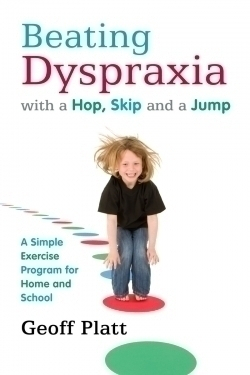Beating Dyspraxia with a Hop, Skip and a Jump
A Simple Exercise Program for Home and School
Dyspraxia, or the inability to perform coordinated movements, is a relatively unfamiliar condition. Yet its incidence is estimated at between five and ten percent of the population, with boys affected three times more often than girls. This insightful and practical guide will arm the reader with a detailed knowledge of dyspraxia’s symptoms, its history, and the conflicting diagnoses surrounding its still unknown causes, plus a recommended exercise program designed by Platt to beat the disability.
Structured in two parts, the Background and the Exercise Program, and broken down into eight chapters split equally between both sections, the book succeeds in not overwhelming its audience. Each chapter is summarized with a concise conclusion and reiteration of information. Part I highlights extensive background and relevant human anatomy; it also touches upon the changes in children’s exercise habits, both at home and in school. Complete with helpful illustrations, photographs, diagrams, figures, tables, and bulleted and numbered lists, this guide is extremely educational in terms of background. Stretching across ninety-three pages, the first part greatly overshadows the later, however, which details the exercise program in a little over thirty pages. While the photographs of the exercises are helpful, there is a lack of data concerning Platt’s research process and interaction with children suffering from dyspraxia. Only two accounts–those of John and Sophie–are mentioned. The book would benefit from expanding the second half to include this information; and though it is apparent that Platt spent a great deal of time conducting his research, his conclusion also feels rushed.
An impressive reference list reassures that Platt uncovered significant resources during his research and is an expert on dyspraxia. His dedication to uncovering a cause and a cure for this condition is admirable, and anyone who suffers from, or knows someone who suffers from, dyspraxia should read this guide. The decline in our youth’s physical activity is a root cause of both childhood obesity and possibly of dyspraxia. The topic is largely relevant, as is this statistic, courtesy of the author: “Cardiovascular fitness levels among 10-year-old children are dropping at the rate of 4.8 per cent per decade.”
Reviewed by
Lauren Lloyd
Disclosure: This article is not an endorsement, but a review. The publisher of this book provided free copies of the book and paid a small fee to have their book reviewed by a professional reviewer. Foreword Reviews and Clarion Reviews make no guarantee that the publisher will receive a positive review. Foreword Magazine, Inc. is disclosing this in accordance with the Federal Trade Commission’s 16 CFR, Part 255.

